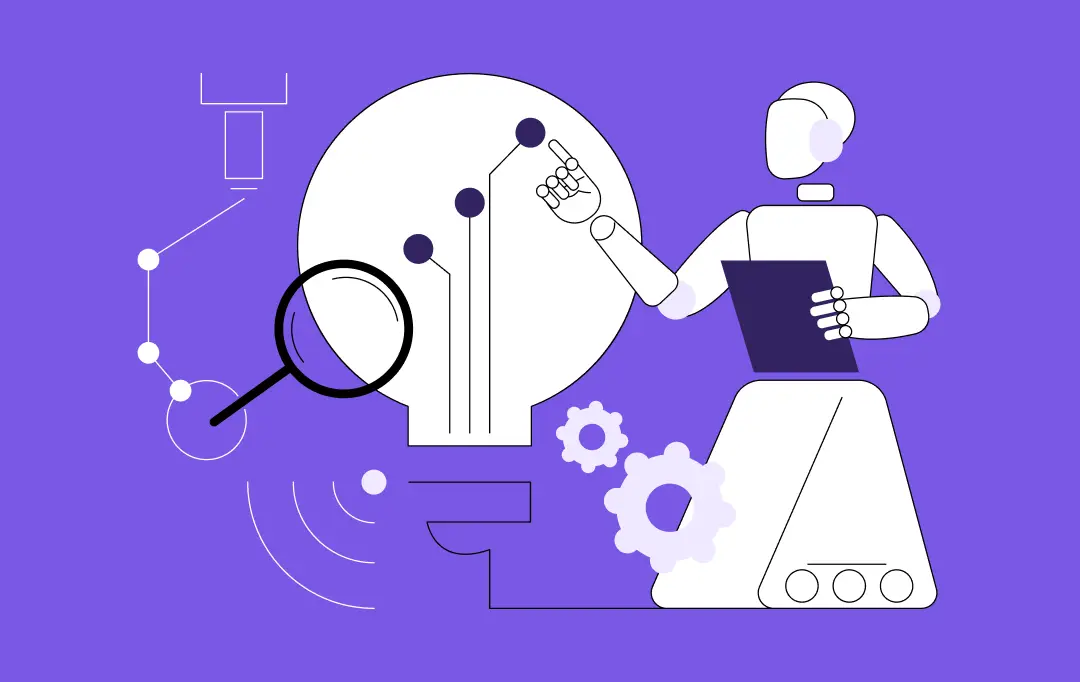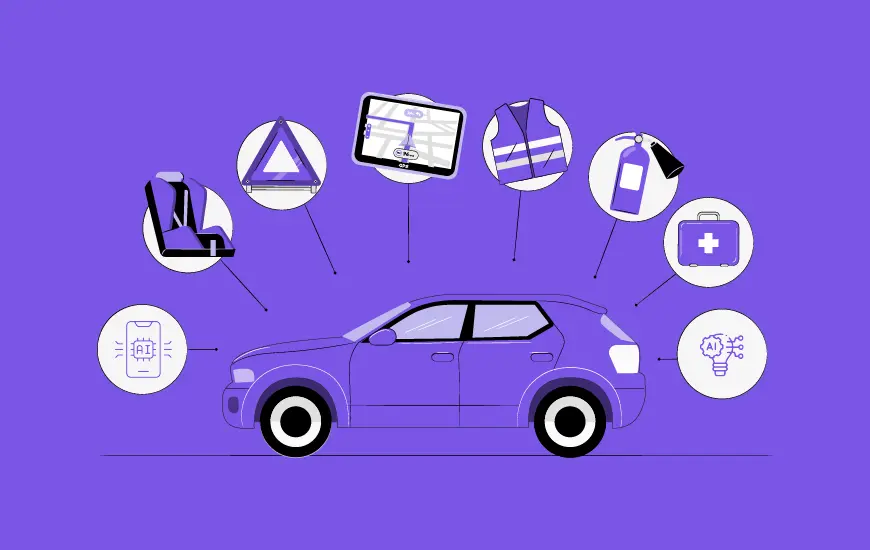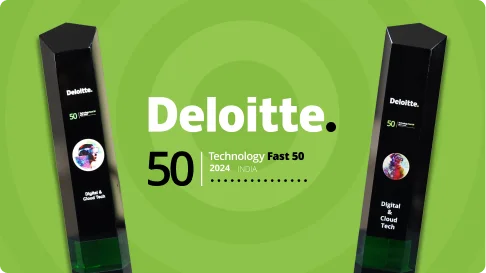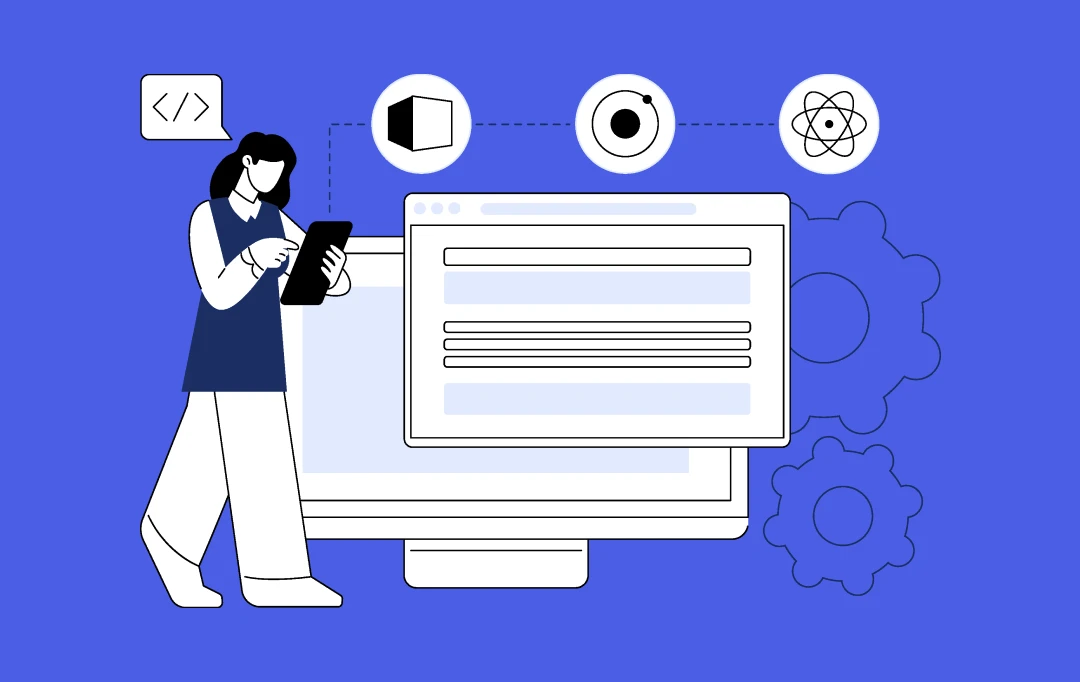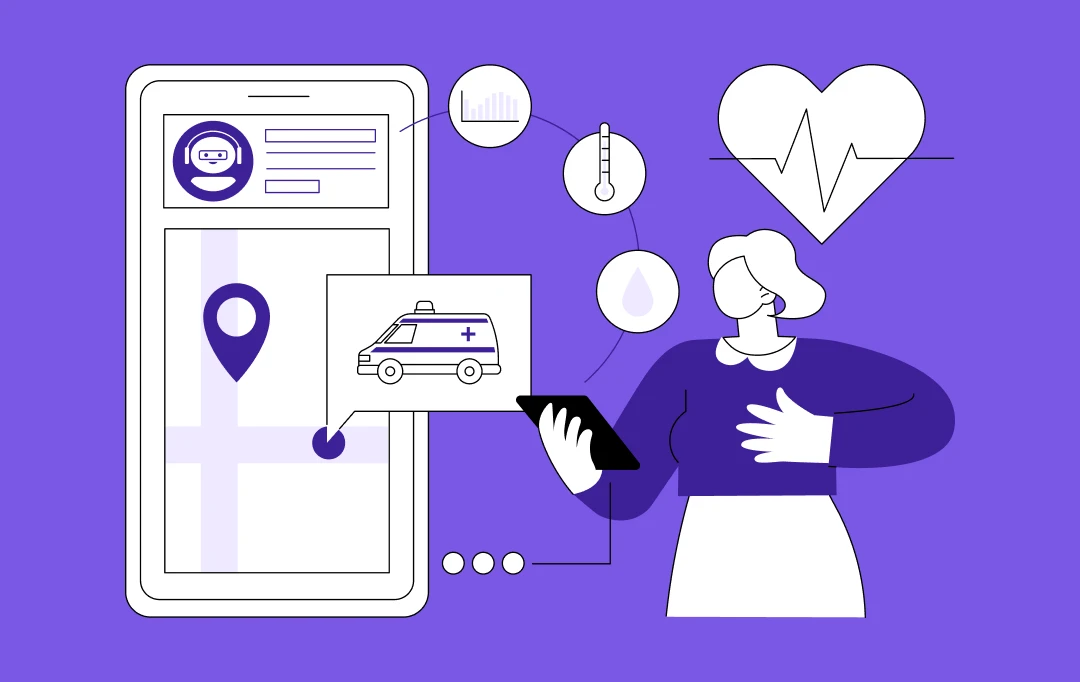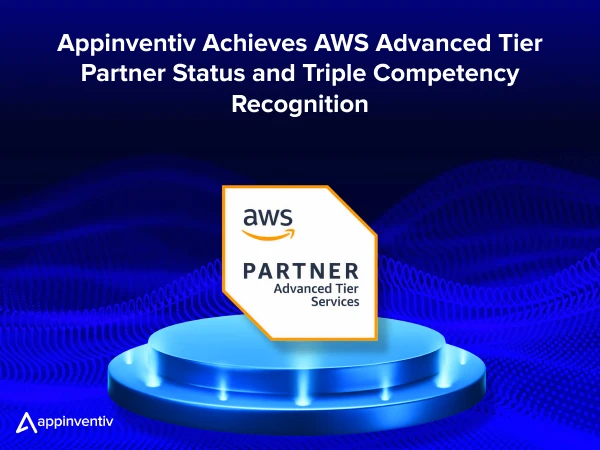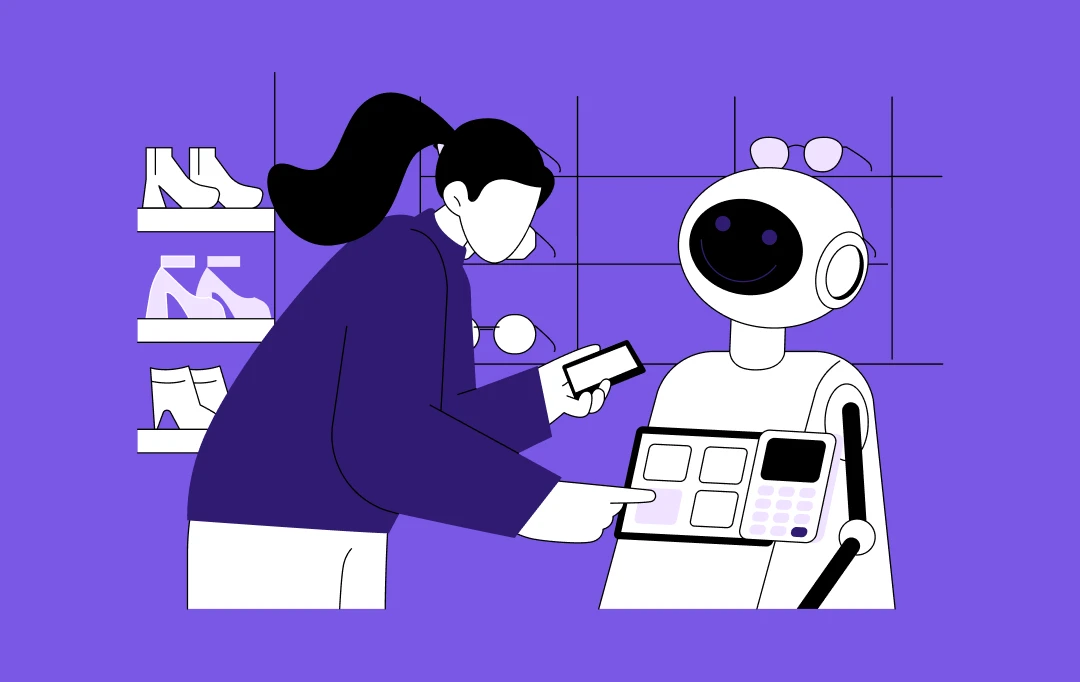- Understanding Digital Therapeutics (DTx)
- Key Business Benefits of a Digital Therapeutics Platform
- 1. Personalized Care That Feels Human
- 2. Managing Chronic Conditions at Scale
- 3. Saving Money While Improving Outcomes
- 4. Data That Strengthens Clinical Judgment
- 5. New Doors for Business Growth
- 6. Proof That Treatment Works
- Prescription Digital Therapeutics (PDT): The Next Frontier
- Clinical Evidence, Validation, and Reimbursement Pathways
- Core Platform Features for Every Stakeholder
- 1. Patient-Facing Features
- 2. Clinician-Facing Features
- 3. Administrative and Compliance Features
- 4. AI and Analytics Layer
- 5. Integration and Interoperability
- 6. Engagement and Feedback Features
- Engagement and Adherence Toolkit
- 1. Behavioural Design and CBT Modules
- 2. Micro-Nudges and Smart Reminders
- 3. Gamification and Motivation Loops
- 4. Community and Peer Support
- 5. Real-Time Progress Feedback
- 6. Adaptive Learning Algorithms
- Compliance Frameworks and Regulatory Pathways
- 1. United States: HIPAA and FDA
- 2. Europe: GDPR and MDR
- 3. Germany: DiGA Fast Track
- 4. United Kingdom and Japan
- 5. MENA and Regional Regulations
- 6. Global Best Practices
- Operational Compliance and Medical Device Readiness (SaMD)
- Building the Right Foundation
- Security, Testing, and Monitoring
- Reference Architecture of a Digital Therapeutics Platform
- Tech Stack for DTx Development
- Development Process and Cost Breakdown
- Step-by-Step Development Roadmap
- Estimated Development Cost
- DTx Business Models and Go-to-Market Strategy
- Commercial Models
- Go-to-Market (GTM) Strategy
- Measuring Success – KPIs and Clinical Outcomes
- Why It Matters
- What to Measure
- Making Data Useful
- Real-World Success Stories
- reSET and reSET-O (by Pear Therapeutics)
- BlueStar (by Welldoc)
- Kaia Health
- Health-e-People (Appinventiv Case Study)
- Future Trends in Digital Therapeutics (DTx)
- Why Falling Behind These Trends Can Hurt Your DTx Roadmap
- How Appinventiv Helps You Build a Regulatory-Ready DTx Platform
- FAQs
Key Takeaways
- Digital therapeutics is more than an app trend, it’s real, evidence-based digital care
- The strength of a good digital therapeutics platform lies in balance: clinical validation, compliance, and a design that feels effortless for both patients and doctors.
- Regulations like HIPAA, GDPR, MDR, and FDA SaMD are not hurdles; they’re the guardrails that make innovation in healthcare trustworthy.
- With AI now part of DTx, therapy can adjust in real time for spotting risks, predicting behavior, and helping patients stay on track naturally.
- Working with a partner experienced in custom healthcare software development services can turn a great medical idea into a compliant, scalable digital solution that actually reaches patients.
Digital healthcare has moved far beyond step counters and calorie trackers. The real innovation today lies in digital therapeutics software development, where software is used as a form of treatment. These solutions don’t just help patients monitor their health; they guide recovery, improve adherence, and deliver measurable outcomes backed by clinical research. Across hospitals, startups, and pharma labs, teams are experimenting with digital therapeutics (DTx) app development to build programs that fit right into everyday care.
A recent study by Grand View Research values the global digital therapeutics market at around USD 7.67 billion in 2024, projected to reach USD 32.5 billion by 2030. That kind of growth shows how fast this field is expanding, and why digital therapeutics platform development has become a major focus for healthcare providers and investors. What began as wellness apps is now evolving into clinically approved therapies supported by doctors, insurers, and regulators alike.
But building successful software development for DTx goes well beyond writing code. It involves clinical testing, regulatory approvals, patient data protection, and engagement design that keeps people involved in their treatment journey. Through this guide, we’ll break down the core principles of digital therapeutics, explore different types of DTx software development, and outline the path from concept to compliant launch, highlighting the real benefits and measurable outcomes of digital therapeutics software along the way.
Don’t wait to invest in innovation.
Understanding Digital Therapeutics (DTx)
Digital therapeutics, often called DTx, sit at the intersection of medicine and technology. Unlike fitness or wellness apps, these platforms are built on clinical research and go through the same kind of validation you’d expect from a medical device. Their goal is simple, to help patients follow evidence-based treatment plans using guided, responsive software. That’s what makes digital therapeutics software development such an important part of today’s healthcare evolution.
Not every DTx solution looks the same. Some focus on mental health, using cognitive therapy modules, while others help people manage chronic conditions like diabetes or COPD. Each one demands a different approach to design and regulation, which is why custom digital therapeutics software is now preferred over generic health apps. It gives clinicians control, keeps data secure, and personalizes every user’s experience.
The real beauty lies in how these tools connect everything from patients to doctors, and doctors to data, while keeping everything in one loop. With thoughtful application of digital therapeutics platform development, what used to be a one-way prescription becomes an ongoing, measurable form of care.
Key Business Benefits of a Digital Therapeutics Platform
Digital therapeutics has stopped being a side project. It’s now the quiet engine behind modern healthcare. With the right digital therapeutics software development, hospitals, pharma teams, and startups are learning that better outcomes often start with smarter, smaller digital interactions.
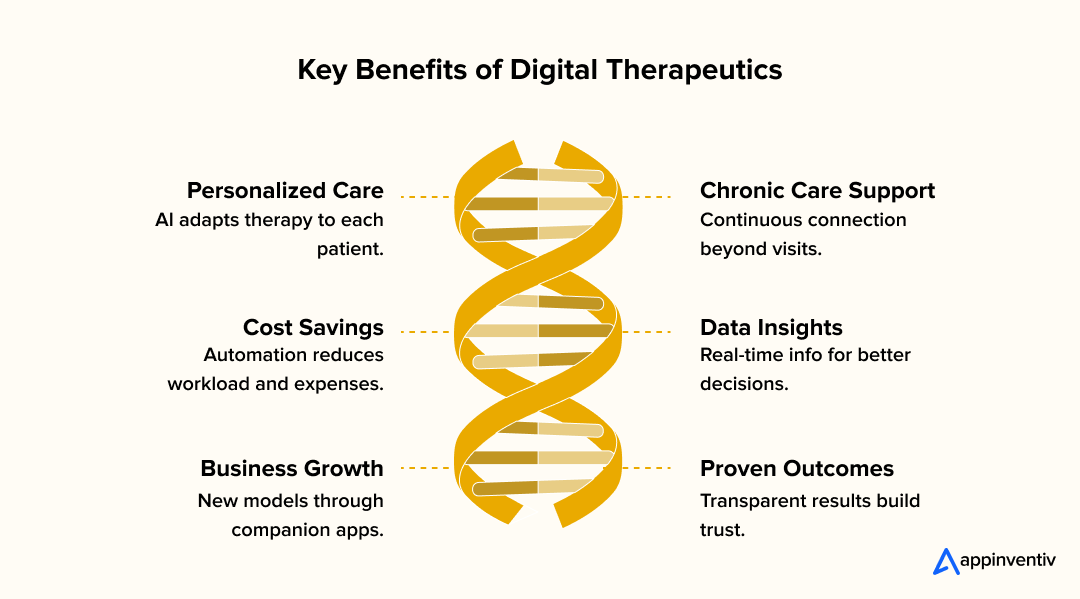
1. Personalized Care That Feels Human
No two patients behave the same. A good DTx app pays attention to that and learns the rhythm of each person’s day, when they need a nudge, when they don’t. Through healthcare app development for DTx, small design choices like tone of reminder, timing, length of a prompt, make therapy less mechanical and more personal.
Behind the curtain, AI in DTx keeps watch. It notices dips in activity or mood and tweaks the plan quietly. The result feels human: timely help, not constant surveillance. Doctors see steadier adherence; patients feel guided, not managed.
Learn more about how AI is transforming patient care in healthcare.
2. Managing Chronic Conditions at Scale
Chronic care is relentless. People don’t stop needing support between visits. Digital therapeutics platform development lets clinicians stay connected without being on call 24/7. Automated tracking, dashboards, and early-alert systems turn scattered updates into one clear picture.
Patients, meanwhile, get comfort in the routine of logging their symptoms, seeing instant feedback, knowing someone’s watching progress. It’s simple, but it changes behaviour. Small daily contact replaces long silent gaps.
3. Saving Money While Improving Outcomes
Healthcare costs rise faster than budgets. DTx can ease that tension. Once a program runs, hundreds of users can be supported with minimal extra cost. Each automated message or remote check replaces a small piece of manual labour. Over time, the cost of creating a DTx platform fades against the savings it produces.
Hospitals save on readmissions; insurers save on claims. And clinicians get time back for cases that truly need human judgment. This forms a simple equation that keeps both care quality and margins intact.
4. Data That Strengthens Clinical Judgment
Between appointments, traditional medicine works in the dark. Healthcare software development for DTx changes that. Every tap, reading, or symptom note becomes part of a living record. Trends appear before crises do.
Doctors can adjust medication or therapy plans in real time instead of waiting for the next review. Patients feel seen; practitioners make faster, better decisions. It’s evidence in motion, not paperwork later.
5. New Doors for Business Growth
Digital therapeutics has also opened a market that didn’t exist ten years ago. Pharma brands now pair drugs with companion apps; providers license their custom digital therapeutics (DTx) solutions to other clinics. Some even white-label them for insurers.
Each partnership builds reach without extra buildings or staff. Reputation grows faster than infrastructure, offering a rare advantage in healthcare.
6. Proof That Treatment Works
The benefits and measurable outcomes of digital therapeutics software are its own marketing. Progress charts, adherence rates, and clinical improvements are all visible, no extra paperwork required. That visibility helps providers qualify for reimbursement and convinces patients they’re improving for real.
When results are transparent, everyone gains confidence. Patients trust the process; payers trust the data. It’s accountability built right into the design.
In the end, digital therapeutics software development is less about apps and more about access. It brings consistent care to people’s pockets, gives clinicians clarity they’ve never had, and lets organizations grow without losing their human touch.
Prescription Digital Therapeutics (PDT): The Next Frontier
Prescription digital therapeutics (PDTs) are a leap ahead of standard health apps. These are clinically-validated software products that healthcare professionals prescribe. They’re built to deliver therapeutic benefits like traditional treatments, but in a digital form.
What makes PDTs distinct?
- Clinicians prescribe them, not just recommend them.
- They go through regulatory review, not just app store approval.
- Real-world data and outcomes matter: these aren’t trivial wellness tools.
- They often integrate with other therapies or medications, moving beyond standalone apps.
What this means for developers and healthcare teams:
- Engaging in digital therapeutics platform development means designing for safety, effectiveness, and patient behaviour, not just interface design.
- Software development for DTx must factor in regulatory controls, data-security, and clinical-trial evidence.
- With the rise of AI in DTx, there’s an opportunity to personalise interventions in real time, but that also raises stakes for validation and transparency.
Clinical Evidence, Validation, and Reimbursement Pathways
Every effective digital therapeutic starts with proof. Before a product reaches patients, it must show that its approach works, through studies, trials, and real-world data. That’s what separates digital therapeutics software development from regular health-app creation. Here, evidence isn’t optional; it’s the foundation.
To build trust and meet medical-device standards, developers follow a few key steps:
- Define measurable endpoints. Improvement in blood sugar levels, reduced anxiety scores, or better medication adherence are common markers.
- Run clinical validation. Controlled studies confirm whether outcomes match the claim. This is where software development for DTx connects directly with clinical research teams.
- Collect real-world evidence (RWE). After launch, ongoing data helps refine algorithms and measure safety in everyday settings.
- Document everything. Clinical reports, usability tests, and quality-system records all become part of the compliance package.
Once the results hold up, reimbursement discussions begin. Payers and government health agencies now recognise DTx solutions with proven outcomes. In the US, the FDA’s Digital Health Center of Excellence has cleared several software-based therapeutics. Germany’s DiGA Fast Track offers another route, allowing approved apps to be prescribed and reimbursed within weeks.
For developers planning custom digital therapeutics (DTx) solutions, this path from validation to reimbursement can feel complex but is achievable with the right roadmap. The goal isn’t just approval; it’s long-term adoption, where digital therapeutics platform development leads to accessible, measurable care that payers are willing to support.
Core Platform Features for Every Stakeholder
A digital therapeutics product works only when everyone involved, patients, clinicians, and administrators—gets value from it. During digital therapeutics platform development, the design has to balance empathy with precision. These features form the foundation of any product that claims to improve outcomes while staying compliant and practical.
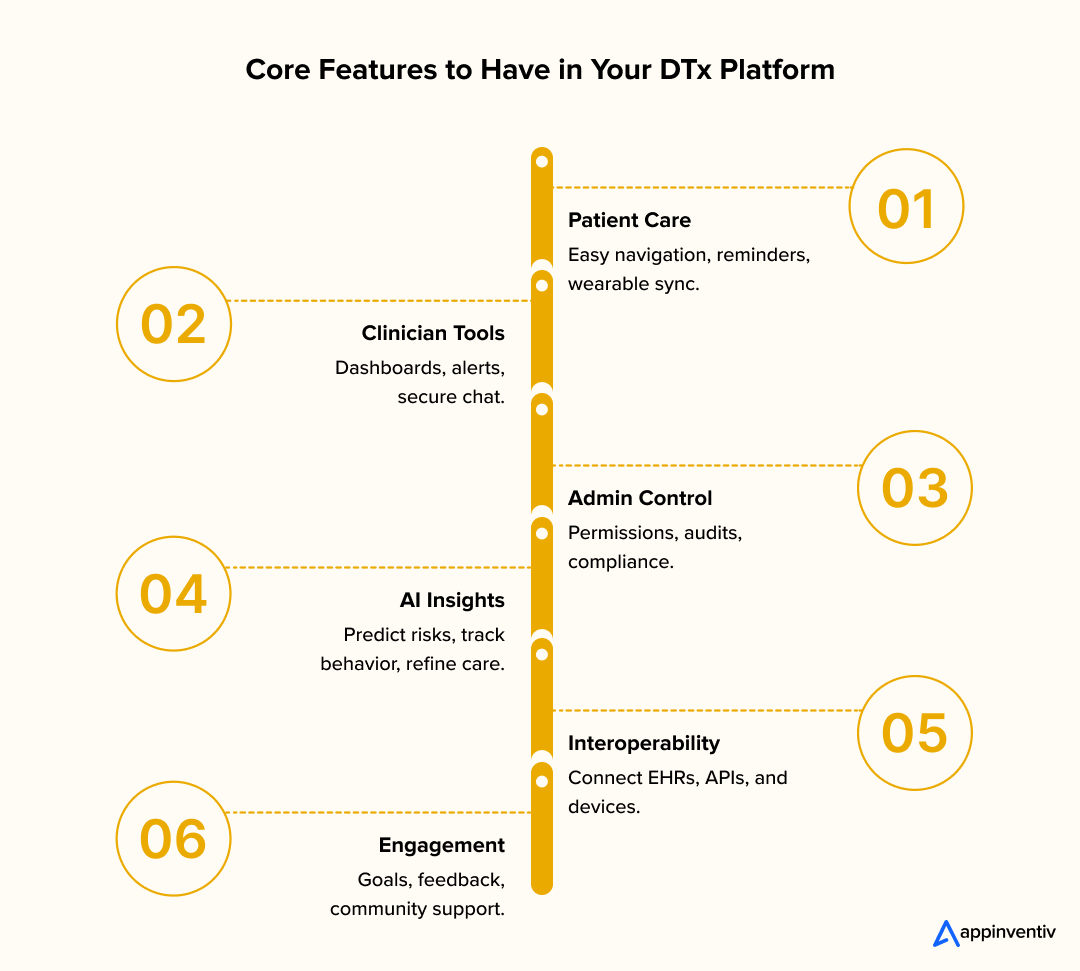
1. Patient-Facing Features
For patients, simplicity matters more than anything. A DTx app should open easily, guide clearly, and never overwhelm. Features like symptom tracking, medication reminders, and progress visuals keep users engaged without forcing them to “learn” the app. When combined with guided therapy modules, these features make care feel familiar and human.
Adding wearables or sensors brings another layer of depth. Heart-rate data, sleep patterns, or step counts can sync seamlessly to build a daily health story. With a well-built custom digital therapeutics software approach, patients don’t just record data, they understand what it means and how to act on it.
2. Clinician-Facing Features
Doctors need information they can trust at a glance. A clinician dashboard should pull live data from hundreds of patients, flag anomalies, and translate patterns into quick insights. These panels turn what used to be endless reports into something readable in seconds.
Secure chat, automated reports, and integration with hospital systems help doctors adjust treatment plans on the go. In practice, software development for DTx gives clinicians their own control tower, a simple tool that supports complex decisions.
3. Administrative and Compliance Features
For administrators, the challenge is control and compliance. Access logs, role-based permissions, and encryption are non-negotiable. Building this foundation early prevents painful fixes later. A strong admin layer is what makes compliances of digital therapeutics app development sustainable rather than restrictive.
Audit trails, consent management, and data-retention tools create transparency. Regulators see clear records; patients know who’s handling their data. It’s governance through design, not paperwork after launch.
4. AI and Analytics Layer
The invisible work happens here. AI analytics engines sort through thousands of data points to find what matters. Predictive models flag risk early; behavioural insights show why users drop out or relapse. This is where AI in DTx brings clinical intelligence to the surface.
When combined with human oversight, AI turns raw numbers into care strategies. Developers and clinicians can see the “why” behind the data, helping the next version of the therapy learn faster and heal smarter.
5. Integration and Interoperability
No DTx platform can exist in isolation. It must talk to hospital EHRs, wearable APIs, and sometimes national health databases. Using HL7 or FHIR standards ensures information flows without friction. True digital therapeutics (DTx) integration is about safety and continuity, avoiding repeated tests, lost notes, or contradictory prescriptions.
Interoperability in healthcare also shapes patient trust. When users see their data follow them across systems, confidence grows. That seamless experience is what separates a working DTx app from just another health product.
6. Engagement and Feedback Features
Motivation fades quickly in healthcare. Gamified milestones, micro-goals, or community support groups help patients stay consistent. These tools aren’t decoration, they’re part of the treatment itself.
Combined with timely progress feedback, these features build the key features for engaging DTx solutions that patients return to daily. The emotional connection between user and platform is often what keeps the therapy alive long after launch.
Engagement and Adherence Toolkit
You can build the most advanced digital therapeutics software development project in the world, but if people stop using it, the impact disappears. Engagement is what turns a product into a habit, and habit into results. Real success in DTx comes from designing for emotion, not just efficiency.
1. Behavioural Design and CBT Modules
Therapy works best when it fits into a person’s real life. Many DTx programs now use short, guided cognitive-behavioural exercises that people can do on their phones. These moments help users feel progress instead of pressure.
When developers add these tools during app development for DTx, they focus on tone and timing. The language is gentle, the tasks simple. A small change, like switching “You must log now” to “Let’s check in” can decide whether a user stays or leaves.
2. Micro-Nudges and Smart Reminders
Most people don’t need lectures; they need reminders that don’t nag. Push notifications that arrive at the right time or a short message that sounds human can bring someone back to their routine naturally.
Through AI in DTx, the system can notice when someone ignores alerts and quietly adjust frequency or timing. Over a few weeks, the reminders start to feel personal, not programmed.
3. Gamification and Motivation Loops
Progress should feel visible. A simple streak counter, a badge, or a “well done” screen might sound small, but it gives patients proof that effort matters. Done right, gamification replaces guilt with reward.
Good software development for DTx borrows just enough from gaming to create movement. It’s not about points, it’s about keeping users emotionally connected to the process of getting better.
4. Community and Peer Support
Healing feels lighter when you don’t do it alone. Safe chat spaces or moderated communities help patients share small wins, frustrations, and advice. That shared experience often keeps people engaged longer than any algorithm can.
By weaving these spaces into custom digital therapeutics (DTx) solutions, developers create a sense of belonging. For many, it’s the first time treatment feels social instead of solitary.
5. Real-Time Progress Feedback
Nothing motivates like seeing proof that you’re improving. Simple visuals for better sleep charts, pain scores trending down, a personal note from the clinician gives patients a reason to keep showing up.
With proper digital therapeutics (DTx) integration, feedback can flow both ways. Doctors see how patients respond; patients see that doctors notice. That quiet acknowledgment does more for adherence than any push notification.
6. Adaptive Learning Algorithms
Some weeks, users have energy; some weeks, they don’t. Apps that notice the difference and adapt are offering lighter sessions or shorter lessons to keep people from dropping off. It’s empathy written into code.
When teams build custom digital therapeutics software with adaptive logic, the app grows alongside the patient. It stops feeling like a program and starts feeling like a partner.
At its heart, engagement in digital therapeutics isn’t about technology, it’s about care that remembers people are human. The best DTx platforms don’t demand discipline; they inspire it, quietly, one small moment at a time.
Compliance Frameworks and Regulatory Pathways
In healthcare, innovation means little without compliance. A successful digital therapeutics software development project doesn’t just work, it must also be trusted, secure, and legally sound. Building for compliance early saves teams from painful redesigns later. It’s the difference between a promising idea and a product that can actually reach patients.
| Region / Framework | Key Focus Areas | Purpose |
|---|---|---|
| United States – HIPAA & FDA | Data privacy, SaMD approval | Protects patient data and validates DTx safety and effectiveness |
| Europe – GDPR & MDR | Data governance, device classification | Ensures privacy, documentation, and audit-ready compliance |
| Germany – DiGA Fast Track | Clinical evidence, data security | Enables fast approval and reimbursement for DTx apps |
| United Kingdom & Japan – NICE & PMDA | Clinical validation, safety standards | Approves only evidence-based digital therapeutics |
| MENA – PDPL, NDMO, DHA | Data protection, regional compliance | Mirrors GDPR-level privacy and defines local DTx pathways |
| Global Standards – ISO 27001, ISO 14971, IEC 62304 | Encryption, consent, data control | Establishes global trust and interoperability for DTx solutions |
1. United States: HIPAA and FDA
In the US, two names define digital health compliance, HIPAA and the FDA. HIPAA covers how patient data is collected, stored, and shared. It protects privacy and demands encryption, consent, and strict access control.
For therapeutic products, the FDA steps in. Most DTx apps fall under its Software as a Medical Device (SaMD) category. Developers often go through 510(k) or De Novo clearance, depending on how novel the product is. Those approvals prove safety and effectiveness before the product reaches users.
2. Europe: GDPR and MDR
Europe adds another layer through GDPR for data and MDR for medical device standards. GDPR governs how companies use personal data, everything from patient profiles to analytics dashboards. Even anonymized data must meet its consent and processing rules.
The MDR, meanwhile, focuses on classification and safety testing for software that influences treatment. For teams handling software development for DTx, MDR compliance isn’t optional. It ensures each release is documented, validated, and ready for audit at any time.
3. Germany: DiGA Fast Track
Germany has built one of the most practical pathways for DTx adoption, the DiGA Fast Track. It lets approved apps be prescribed by doctors and reimbursed by insurers. The process focuses on clinical evidence and data security, giving legitimate players a faster route to patients.
For startups, this model offers a blueprint for proving both value and compliance. It’s a reminder that regulation, when designed well, can actually accelerate innovation rather than slow it down.
4. United Kingdom and Japan
In the UK, the National Institute for Health and Care Excellence (NICE) evaluates DTx tools for clinical and economic impact. Only those that demonstrate measurable benefit can make it to the NHS network. Japan’s PMDA, meanwhile, follows a similar path, balancing innovation with patient safety through local approvals.
Both countries share one principle: if a digital tool influences medical outcomes, it must be treated like medicine. That’s the mindset every digital therapeutics platform development team should build around.
5. MENA and Regional Regulations
The Middle East is catching up fast. The UAE’s Personal Data Protection Law (PDPL) and the Saudi National Data Management Office (NDMO) frameworks mirror GDPR-level privacy rules. Health authorities such as DHA in Dubai are now defining clearer DTx approval pathways.
For any regional launch, custom digital therapeutics (DTx) solutions must meet these standards before data ever leaves the server. A compliant foundation early on protects brand credibility later.
6. Global Best Practices
Regardless of geography, the same pillars hold true, encryption at rest and in transit, role-based access, transparent consent, and patient control over data. Frameworks like ISO 27001, ISO 14971, and IEC 62304 support these principles globally.
Teams that bake compliance into design don’t just pass audits; they earn trust. In DTx, that trust is everything, it’s what lets innovation reach patients safely and stay there.
Operational Compliance and Medical Device Readiness (SaMD)
In digital health, compliance isn’t a hurdle to clear, it’s part of the build. Teams that think about it early rarely face surprises later. The ones that don’t often end up fixing things twice. That’s the quiet truth behind every successful digital therapeutics software development story.
Building the Right Foundation
When a product qualifies as a medical device, documentation becomes as important as code. Standards like IEC 62304 for software lifecycle and ISO 14971 for risk management set the tone. They make sure design, testing, and maintenance follow a traceable path.
It’s simple practice: write it down, review it, and keep it in one place. Those records (such as design notes, validation reports, usability feedback) prove that quality was part of the plan, not an afterthought. This habit keeps software development for DTx smooth when audits arrive.
Security, Testing, and Monitoring
After launch, safety doesn’t run on autopilot. Teams schedule penetration tests, maintain encrypted backups, and review access logs to catch weak points early. Compliance with 21 CFR Part 11 helps ensure digital signatures and records stand up in court or regulatory review.
The best teams treat this as teamwork, not red tape. Developers, clinicians, and QA staff share one goal that is to keep the product reliable and patients safe. When done right, compliance stops feeling like paperwork and becomes quiet reassurance built into every line of custom digital therapeutics software.
Reference Architecture of a Digital Therapeutics Platform
Every DTx system starts with the same question, how do we make all the moving parts talk to each other? The answer is a clear, layered design. A good architecture doesn’t look fancy; it just works quietly in the background. That’s what makes digital therapeutics platform development dependable over time.
Patient layer: This is the face users see, the app on their phone or tablet. It handles therapy modules, reminders, progress charts, and privacy settings. The focus is simplicity. If the patient needs training to use it, something’s wrong.
Clinician layer: Doctors and care managers use dashboards that pull data from hundreds of users. Instead of endless spreadsheets, they get clean visuals and alerts that actually help them act faster.
Analytics and AI layer: Here’s where AI in DTx earns its keep. It studies patient patterns, predicts risks, and adjusts care plans in real time. The logic stays invisible to the user, but it makes the experience feel more personal.
Integration layer: This connects everything, wearables, hospital systems, even insurer platforms. True digital therapeutics (DTx) integration means the patient doesn’t repeat the same data five times. It’s all synced, secure, and consistent.
Security and compliance layer: The quiet foundation. Encryption, consent, access control all the boring but essential stuff that keeps trust intact.
In practice, the best DTx platforms don’t feel complex. They just feel right, simple to use, safe to trust, and smart enough to learn along the way.
Tech Stack for DTx Development
Every digital product has a heartbeat, in DTx, that heartbeat comes from the tech stack. The right setup doesn’t need to be complicated; it just needs to work quietly and never break trust. That’s the real goal behind every digital therapeutics software development project.
| Layer / Focus Area | Tools Commonly Used | Why It Matters (Real-World View) |
|---|---|---|
| Frontend (Patient App) | React Native / Flutter | Keeps the interface smooth across Android, iOS, and web. In DTx, clarity wins over visuals — patients should find their plan in two taps. |
| Backend (Logic & Data Flow) | Node.js / Python (Django or FastAPI) | Runs the real work — reminders, progress tracking, data exchange. Stability and security are everything for healthcare. |
| Database (Storage) | PostgreSQL / MongoDB + cloud-managed options | Holds sensitive records. Needs reliability, encryption, and easy scaling when users grow. Regulators care most about this layer. |
| AI & Analytics | TensorFlow / PyTorch / cloud AI services | The “thinking” layer. AI in DTx finds patterns, predicts drop-offs, and personalises care without feeling robotic. |
| Cloud & Integration | AWS HealthLake / Google Cloud Healthcare / FHIR & HL7 APIs | Connects the app with wearables, hospitals, and insurers — true digital therapeutics (DTx) integration that keeps data flowing safely. |
| Security & Access | OAuth 2.0 / JWT / AES-256 encryption / MFA | Protects every login and record. Any custom digital therapeutics software that skips this layer loses trust fast. |
A good tech stack fades into the background. Patients only notice that the app feels smooth, clinicians see accurate data, and nobody worries about safety. That’s when technology does its job right.
Development Process and Cost Breakdown
Creating a digital therapeutics product isn’t about rushing to launch, it’s about building something reliable enough for real patients to use daily. The journey blends technology, clinical testing, and compliance at every step. Here’s how a typical digital therapeutics software development process unfolds, along with the cost ranges teams can expect.
Step-by-Step Development Roadmap
A structured development roadmap for creating digital therapeutics solutions helps teams move from concept to launch without losing sight of compliance or user empathy. Each stage has its own purpose, but together they form a roadmap that balances speed, safety, and scalability
| Stage | What Happens Here | Outcome |
|---|---|---|
| Discovery & Research | Define the medical challenge, user needs, and compliance requirements. Identify key stakeholders early. | A clear product vision and regulatory plan. |
| Product Design & Prototyping | Designers map user flows and interfaces that are simple and inclusive. Accessibility comes before aesthetics. | Interactive prototype ready for early testing. |
| Development & Integration | The real software development for DTx begins — backend, APIs, analytics, and AI modules come together. | MVP with working data pipeline and security setup. |
| Clinical Validation | Pilot programs or studies test if the solution actually helps patients. Data drives every decision. | Evidence of safety, usability, and clinical benefit. |
| Compliance Review & Certification | Documentation and quality checks prepare the platform for HIPAA, GDPR, MDR, or FDA submission. | Ready for regulatory clearance or certification. |
| Deployment & Continuous Monitoring | Launch happens carefully — with uptime checks, security audits, and feedback loops in place. | Stable rollout and measurable user engagement. |
Estimated Development Cost
Budget planning is part of the strategy, not an afterthought. Costs depend on scope, compliance depth, and integrations, but the investment usually grows with complexity.
| Complexity Level | Approx. Cost (USD) | Typical Duration | What’s Included |
|---|---|---|---|
| MVP / Basic Wellness App | $40K – $120K | 3–4 months | Core features, patient app, basic analytics. |
| Full DTx Platform (Regulated & AI-driven) | $120K – $250K | 6–9 months | Multi-user system, AI models, compliance documentation. |
| Enterprise-Grade DTx Suite | $250K – $400K+ | 9–12 months | Wearable integrations, EHR connectivity, advanced cloud security. |
The cost of creating a DTx platform might seem high, but unlike traditional healthcare systems, it scales beautifully. Once the base is built, every new patient, provider, or partner adds value without increasing overhead. The result: a sustainable product that grows stronger the longer it runs.
To get more detailed insight you can check our blog on healthcare app development cost.
DTx Business Models and Go-to-Market Strategy
Launching a digital therapeutics product isn’t only about approvals and features. The real challenge begins once it’s ready for patients. A well-planned GTM approach ensures the platform finds its audience, builds trust, and stays profitable. Here’s how successful digital therapeutics platform development teams usually take their products to market.
Commercial Models
Different markets demand different business structures. There’s no single playbook, but most DTx providers rely on one or more of these:
- B2B partnerships with healthcare providers: Hospitals and clinics license or subscribe to a DTx platform for their patients, paying per user or per outcome.
- Pharma collaborations: Drug makers bundle apps with medication as part of combination therapy, often backed by real-world evidence.
- Payer or insurer models: Reimbursable custom digital therapeutics (DTx) solutions are prescribed by doctors and covered under insurance, similar to physical drugs.
- Employer health programs: Corporate wellness plans integrate DTx tools to manage chronic conditions and mental health support.
- Direct-to-consumer offerings: Freemium or subscription models work well for prevention-focused DTx, especially in mental wellness or lifestyle management.
Each model fits a different maturity stage. Early startups often start direct-to-consumer to gather user data, while established players move into clinical or insurer networks once validation is complete.
Go-to-Market (GTM) Strategy
A DTx product’s GTM strategy starts with trust. Doctors, patients, and regulators must all believe in the product’s science before the marketing begins.
- Build clinical credibility first. Publish outcomes, join conferences, and partner with research institutions. Data is the only marketing that counts in healthcare.
- Define the adoption path. For B2B, focus on case studies and ROI; for consumers, focus on simplicity and empathy.
- Leverage digital channels smartly. Content marketing, physician outreach, and patient communities help establish awareness without aggressive promotion.
- Prepare for scale early. Regulatory approvals and server infrastructure should grow hand in hand.
When done right, software development for DTx and marketing work as one, the product itself becomes the message.
Measuring Success – KPIs and Clinical Outcomes
In digital health, success isn’t about downloads or investors, it’s about proof. A platform only matters if people actually get better. That’s why every digital therapeutics software development project needs a plan for measuring impact right from day one. Numbers can’t replace empathy, but they do show whether the therapy works.
Why It Matters
Data builds trust. Doctors won’t recommend a product that can’t show clinical progress, and payers won’t reimburse something they can’t measure. Outcomes are the bridge between those worlds. When a company tracks the right signals, improvement in symptoms, adherence, engagement, it stops being a startup and starts being part of care delivery.
Many custom digital therapeutics (DTx) solutions evolve only after they begin measuring. Real-world feedback from patients often highlights what clinical trials miss: when people actually use the app, what makes them quit, and what keeps them coming back.
What to Measure
| Category | Key KPIs | What It Tells You |
|---|---|---|
| Clinical Outcomes | Reduction in symptom severity, HbA1c improvement, PHQ-9 score drop, fewer hospital readmissions | Whether the therapy actually helps patients recover or manage conditions. |
| Engagement & Adherence | Daily active users, therapy completion rate, reminder response rate | How consistently patients follow through with their therapy plans. |
| Economic Impact | Cost per treated patient, readmission savings, reduced clinician hours | The return on investment for hospitals, payers, or employers. |
| Operational Metrics | Platform uptime, data accuracy, response times | Whether the system runs smoothly and reliably. |
| Patient Satisfaction | Net Promoter Score (NPS), qualitative feedback, review trends | How users feel about the app and its ease of use. |
Making Data Useful
Metrics alone don’t fix problems; people do. Teams should meet regularly to review what the numbers say and decide what to change. Changes like new onboarding steps, different reminder timing, a simpler flow. Over time, this habit makes both the product and the care smarter.
That’s how software development for DTx stays alive: by learning from real patients, one data point at a time.
Real-World Success Stories
The best way to understand digital therapeutics is to see it in action. Around the world, a few names have already proven that well-built digital therapeutics software development can change how people heal. When technology and clinical science come together, results start speaking for themselves.
reSET and reSET-O (by Pear Therapeutics)
Among the first prescription DTx products approved by the FDA, reSET and reSET-O helped patients dealing with substance-use disorders stick with therapy. The programs used structured digital modules and real-time progress tracking. Many participants showed better engagement and recovery than those relying only on counselling. It was one of the first real proofs that software could deliver measurable, evidence-based treatment.
BlueStar (by Welldoc)
BlueStar focuses on diabetes care, using it patients can record meals, glucose readings, and daily activity, while doctors watch trends remotely. Over time, studies showed drops in HbA1c levels and stronger patient adherence. It didn’t replace doctors; it simply gave them a clearer picture between visits. That’s what good software development for DTx should do to make everyday care easier, not mechanical.
Kaia Health
Kaia Health took on chronic back and joint pain through a simple idea: guided movement, breathing, and education from home. The app uses motion-tracking to coach patients safely through exercises. Hospitals using Kaia reported lighter physiotherapy loads and happier patients. It’s a reminder that digital adoption doesn’t always start big, sometimes it begins with helping one person move a little better each day.
Health-e-People (Appinventiv Case Study)
Appinventiv developed the Health-e-People platform for one of its healthcare clients. The solution connects patients, caregivers, and clinicians under one secure system. It includes features like remote monitoring, consent management, and multilingual access, all designed to make chronic care management more inclusive and connected.
These stories show that digital therapeutics are no longer a concept. It’s medicine, delivered differently, but with the same purpose: helping people get better, one interaction at a time.
Future Trends in Digital Therapeutics (DTx)
Digital therapeutics is heading into a phase where care feels less like a scheduled task and more like part of someone’s everyday rhythm. The future of software development for DTx is shifting toward systems that feel intuitive, adaptive, and almost invisible in how they support people. Over the next few years, the real change won’t just come from new tech, but from how comfortably it blends into real life like homes, routines, conversations, everything.
Here are some of the key trends in DTx software development:
- AI that learns with you
Instead of rigid therapy paths, apps will shift based on a person’s behaviour and mood. If stress spikes at night or routines fall apart on weekends, the plan adjusts on its own. - Wearables that do more than count steps
Smartwatches and sensors will pick up early hints of trouble by analyzing sleep dips, heart-rate changes, unusual patterns, while nudging both the patient and the care team before things get serious. - Prediction becomes the new normal
DTx tools will start flagging risks early, not after symptoms hit. It’s a quiet safety layer that helps prevent flare-ups instead of reacting to them. - Systems that finally talk to each other
The messy part of healthcare is still disconnected data. Expect far smoother integrations where hospitals, labs, and apps pass information back and forth without friction. - A stronger push for trust and transparency
Technologies like blockchain will help patients feel safer about where their data goes and who sees it, which matters more than ever as digital care expands. - Regulation catches up
More countries will create approval pathways for DTx, making it easier for validated products to reach patients without years of delay. - Pharma + DTx teams working as one
Medications won’t stand alone. Companion apps will help track adherence, flag side effects early, and give clinicians a fuller picture of how patients are actually doing at home.
Why Falling Behind These Trends Can Hurt Your DTx Roadmap
If you don’t move with these changes, the gap shows up faster than most teams expect. Patients will gravitate to platforms that feel more responsive and more personal, and clinicians will prefer tools that fit cleanly into their daily workflow. An older setup simply can’t react to data in real time, which limits how useful the platform feels in real-world care.
There’s also the business side that no one can ignore. Competitors adopting modern DTx development practices will get through approvals quicker, show stronger outcome data, and build payer partnerships sooner. Missing these shifts doesn’t just slow progress — it can push your product out of the consideration set entirely.
How Appinventiv Helps You Build a Regulatory-Ready DTx Platform
Creating a digital therapeutics platform takes deep technical skill and even deeper trust. Appinventiv helps healthcare innovators design, build, and launch digital therapeutics software development projects that meet global compliance standards while staying patient-focused.
With 10+ years of experience in HealthTech, 500+ digital health platforms delivered, and 450+ healthcare clients served, Appinventiv’s track record in custom healthcare software development services has enabled organizations to turn complex DTx ideas into scalable, compliant solutions. Each build follows a compliance-first approach aligned with HIPAA, GDPR, MDR, and FDA SaMD frameworks.
Appinventiv’s engineers specialize in AI in DTx, interoperability, and end-to-end security, ensuring every custom digital therapeutics (DTx) solution runs safely and scales smoothly. Whether the goal is a patient-facing app or a full enterprise healthcare suite, the focus stays the same to build something reliable, human, and clinically meaningful.
If you’re planning to create a compliant, high-performing digital therapeutics platform, Appinventiv can help you move from concept to certified product with confidence. Let’s build together.
FAQs
Q. What is Digital Therapeutics (DTx)?
A. Digital Therapeutics Software Development is about building clinically tested digital tools that help treat or manage medical conditions. These aren’t simple health trackers; they’re designed using proven medical research and go through regulatory checks just like traditional therapies. Each platform uses data, behavior insights, and technology to help patients follow evidence-based treatment plans — all through software instead of pills or physical devices.
Q. What Are Digital Therapeutics (DTx) — and How They Differ from Digital Health Apps?
A. Digital therapeutics belong to the medical side of digital health. While health apps might count steps or log calories, DTx products deliver real, clinically proven interventions prescribed by healthcare professionals. They’re tested in studies, reviewed by regulators, and built to integrate securely with hospitals and patient records. In short, DTx is healthcare-grade software, not just a digital habit coach.
Q. What is the Difference Between Digital Therapeutics and Wellness Apps?
A. A wellness app helps you stay active or sleep better. A digital therapeutic helps you heal. The difference is in validation — DTx products must show results through clinical trials and comply with medical regulations, while wellness apps usually don’t. One supports lifestyle improvement; the other provides measurable medical treatment through technology.
Q. How Long Does It Take to Get FDA Approval for a DTx Software?
A. FDA approval isn’t quick, and rightly so. Depending on how complex the software is, it can take anywhere between 9 and 24 months. Teams go through several stages — pre-submission, clinical testing, documentation, and reviews under the 510(k) or De Novo process. Choosing experienced DTx developers helps shorten this path by getting compliance right from the start.
Q. What Are the Main Regulatory Pathways for DTx Software?
A. Digital therapeutics follow medical-device regulations around the world. In the US, the FDA’s SaMD framework applies. Europe follows the MDR, Germany uses DiGA Fast Track, and the UK’s NICE oversees clinical and cost-effectiveness reviews. Each route demands proof of safety, data security, and patient benefit. Building for compliance from day one avoids rework later and speeds up approval.
Q. How to Develop Digital Therapeutics Software?
A. Developing a DTx product starts with understanding the health problem it will solve. Once that’s clear, teams design simple, accessible interfaces for patients and clinicians. The backend must follow secure standards like FHIR or HL7, while AI in DTx helps personalize care and spot early health patterns.
From there, it’s all about validation — testing the solution with real users, collecting results, and refining before launch. Working with a partner experienced in Digital Therapeutics Software Development and custom healthcare software development services ensures the product is not only functional but also compliant and ready for the real world.


- In just 2 mins you will get a response
- Your idea is 100% protected by our Non Disclosure Agreement.

How Much Does It Cost to Build a Healthcare App in Saudi Arabia? All You Need to Know
Key takeaways: Healthcare app costs in Saudi Arabia range from 112,500 SAR to 2,250,000+ SAR based on size and complexity. The type of app you build matters more to cost than anything else. Compliance, security, and scalability are built into the cost, not add-ons. Development and testing consume the largest share of the budget. Hidden…
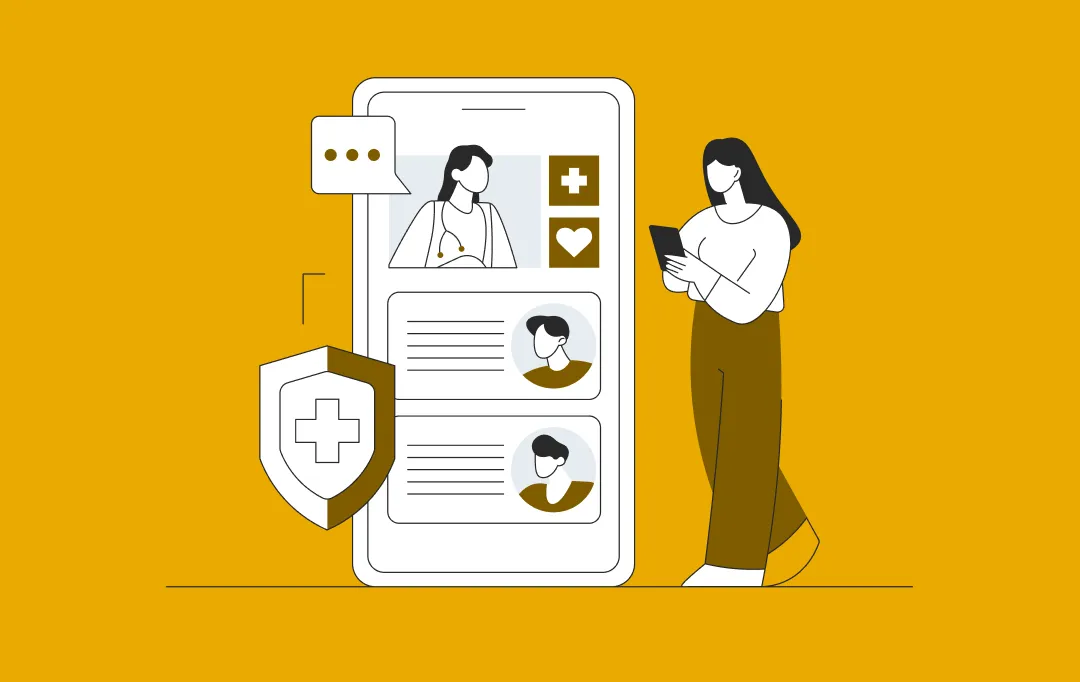
How Prescriptive Analytics Is Shaping the Future of Healthcare Management
A healthcare business doesn’t fall behind because its teams lack skill. It falls behind when decisions take too long. Bed allocation runs on yesterday’s data. Procurement reacts only when shortages hit. Care managers step in after a patient is already at risk. And leadership gets a picture of what’s happening only after the quarter closes,…
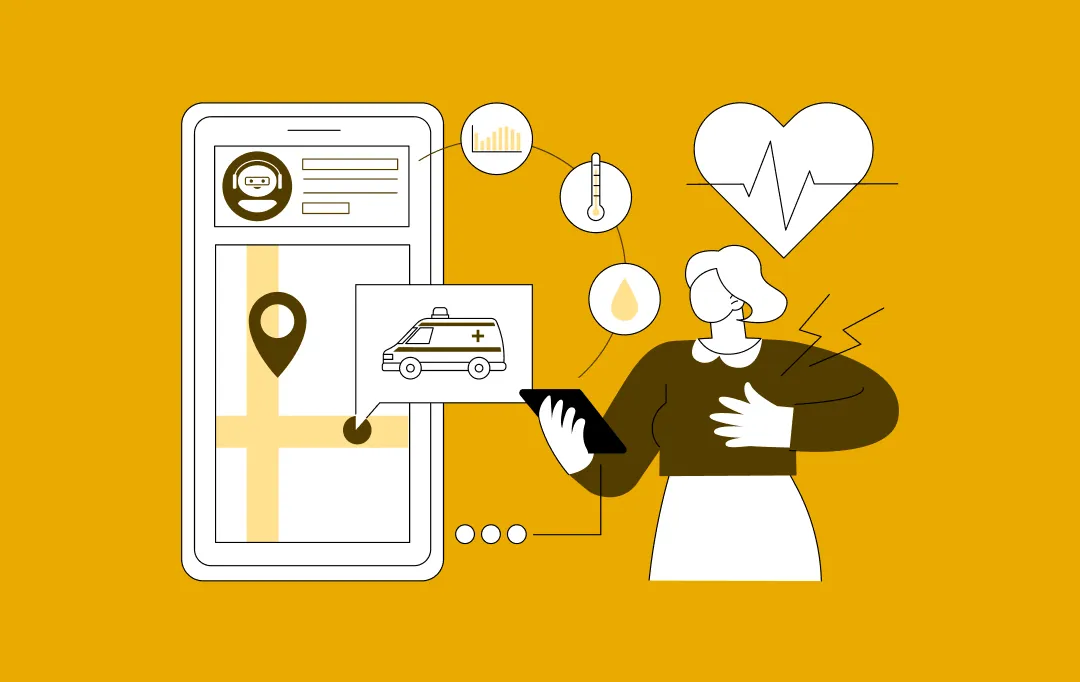
How to Build an Urgent Care App? A Step-by-Step Process, Features and Costs
Key takeaways: With more people turning to digital healthcare, the urgent care app market is expected to touch $3.1 billion by 2024 and continue growing fast through 2030. Apps that offer easy scheduling, video consultations, EHR access, and quick insurance handling tend to attract more users and keep them coming back. Developing an urgent care…

